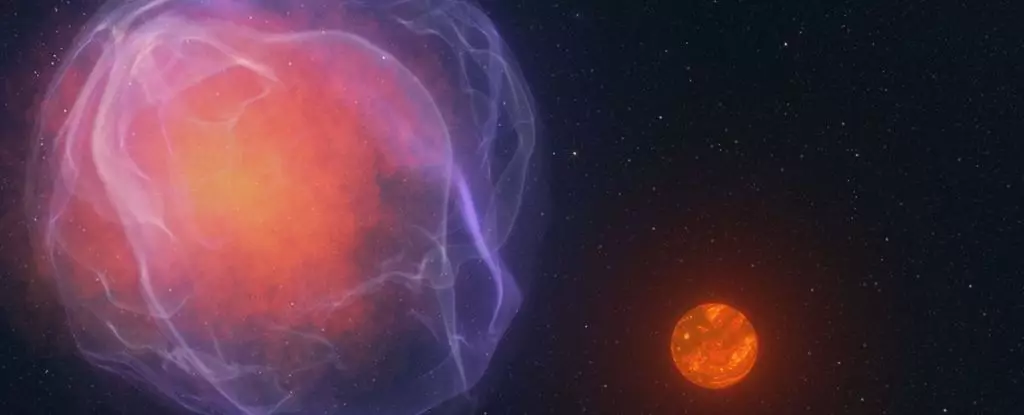The Milky Way is home to a plethora of celestial bodies, most of which orbit the galactic center in an orderly fashion. However, among these stars, there exist rare outliers known as “hypervelocity” stars that defy the norms. One such remarkable star is CWISE J124909+362116.0, affectionately known as J1249+36 for brevity’s sake. What makes this star truly special is not only its staggering velocity of approximately 600 kilometers per second, exceeding the galactic escape velocity, but also its classification as an L subdwarf – a tiny, ancient, main sequence star that ranks among the oldest in the Milky Way.
The recent discovery of J1249+36, initially detected by diligent citizen scientists scouring telescope data for clues about the elusive Planet Nine, has left astronomers intrigued and puzzled. Presented at the 244th Meeting of the American Astronomical Society, the findings of this peculiar star have sparked curiosity within the scientific community. One of the primary conundrums posed by J1249+36 is the origin of its extraordinary velocity. How did this unassuming star attain such breathtaking speed, defying the conventional laws of celestial mechanics?
Numerous theories have been proposed to elucidate the genesis of J1249+36’s remarkable velocity. Among the potential explanations explored by researchers, three prominent hypotheses stand out. The first involves the star being expelled from a binary system featuring a white dwarf companion. White dwarfs, remnants of Sun-like stars that have exhausted their hydrogen fuel, can become unstable when in close proximity to a companion star. If the white dwarf accumulates excess mass, it may undergo a Type Ia supernova, ejecting the companion star at high velocities. While this scenario seems plausible, definitive evidence is lacking due to the white dwarf’s obliteration in the supernova event.
Another intriguing possibility is J1249+36 originating from a many-body interaction within a globular cluster – dense regions within the Milky Way teeming with millions of stars. In these environments, intricate gravitational dynamics involving black hole binary pairs can catapult stars out of the cluster at tremendous speeds. While this scenario offers a plausible explanation, the exact trajectory of J1249+36’s ejection remains elusive, preventing a conclusive determination of its point of origin. Lastly, the intriguing prospect that J1249+36 may hail from one of the Milky Way’s satellite dwarf galaxies adds a cosmological layer of complexity to its enigmatic journey. A study from 2017 suggested an extragalactic origin for hypervelocity stars, hinting at the possibility of J1249+36 originating beyond our galaxy.
To unravel the mystery shrouding J1249+36 and discern its true cosmic heritage, astronomers are turning to detailed analysis of the star’s chemical composition. Traces of elements left behind by a supernova explosion, if present, could provide vital clues about its past. Likewise, investigating the compositional properties of stars within globular clusters may yield insights into J1249+36’s lineage. If these avenues prove inconclusive, the search may extend to the Milky Way’s satellite galaxies, probing the possibility of this celestial wanderer being an intergalactic visitor. As scientific inquiry delves deeper into the origins of hypervelocity stars like J1249+36, the cosmos reveals yet more secrets awaiting discovery.
The quest to comprehend the celestial wanderers of the universe, like the enigmatic star J1249+36, underscores the boundless curiosity and ingenuity of humanity as we strive to unlock the mysteries of the cosmos and unravel the cosmic tapestry that surrounds us.


Leave a Reply